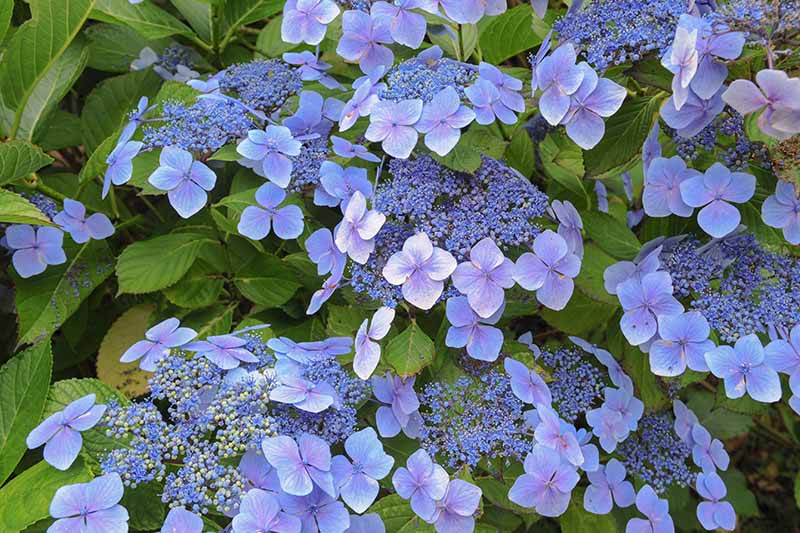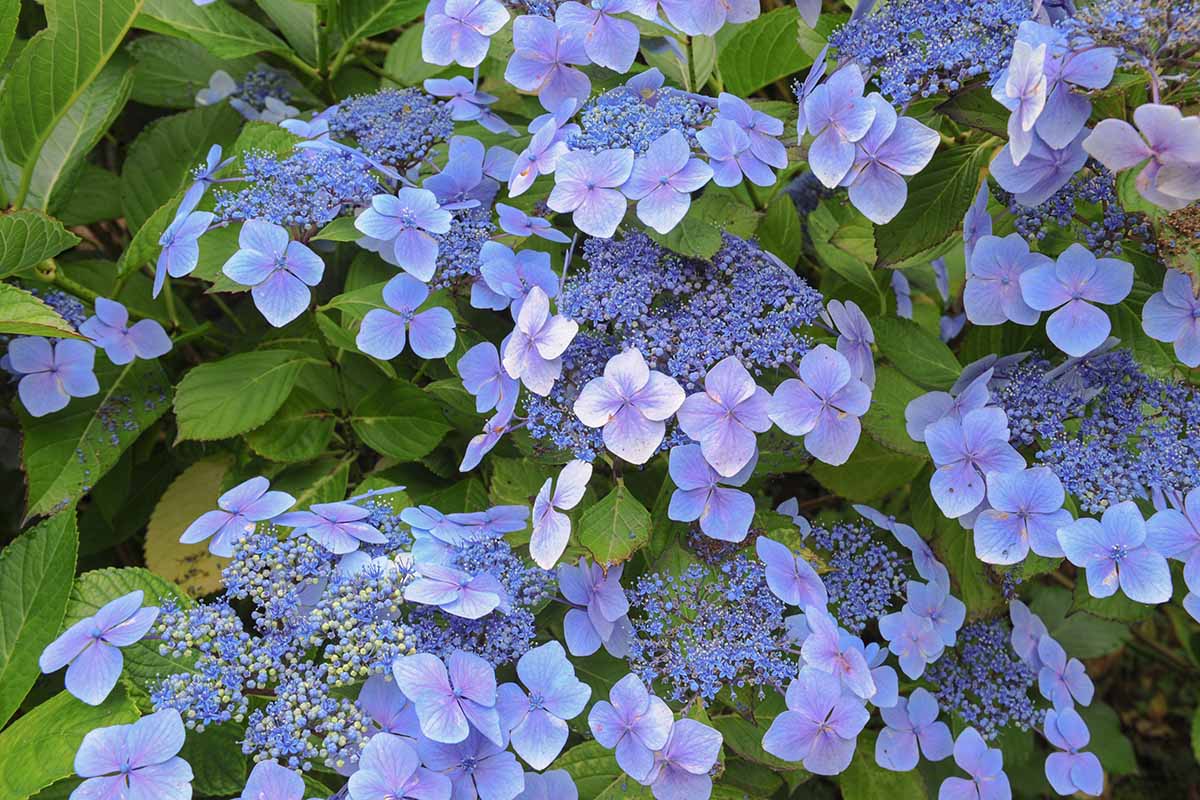Lace Top Hydrangeas: The Ultimate Guide To Growing And Caring For These Gorgeous Shrubs
Lace top hydrangeas are a type of bigleaf hydrangea that is known for its delicate, lace-like flowers. They are a popular choice for gardeners because they are relatively easy to care for and they come in a variety of colors.
In this blog post, we will discuss everything you need to know about growing and caring for lace top hydrangeas. We will cover topics such as:
- Choosing the right location
- Planting and fertilizing
- Watering and pruning
- Overwintering
- Common pests and diseases
We will also provide some tips for troubleshooting problems and getting the most out of your lace top hydrangeas.
Choosing the right location
Lace top hydrangeas prefer a location that receives morning sun and afternoon shade. They can tolerate full sun, but they will need more frequent watering in hot, dry climates. The soil should be moist but well-drained.
Planting and fertilizing
Lace top hydrangeas should be planted in the spring or fall. When planting, dig a hole that is twice as wide and as deep as the root ball. Backfill the hole with a mixture of native soil and compost.
Lace top hydrangeas do not need to be fertilized heavily. A light application of fertilizer in the spring will help promote new growth. You can use a balanced fertilizer, such as 10-10-10.
Watering and pruning
Lace top hydrangeas need regular watering, especially during the first year after planting. Once they are established, they will need less frequent watering. Water deeply so that the water reaches the roots.
Lace top hydrangeas should be pruned in the spring, before new growth begins. Prune to remove dead, diseased, or damaged branches. You can also prune to shape the shrub.
Overwintering
In cold climates, lace top hydrangeas may need to be protected from the cold. You can do this by covering the shrub with a burlap sack or by mulching around the base of the plant.
Common pests and diseases
Lace top hydrangeas are relatively resistant to pests and diseases. However, they can be susceptible to aphids, scale, and powdery mildew. If you see any pests or diseases, you can treat them with insecticidal soap or neem oil.
Troubleshooting
If your lace top hydrangeas are not blooming, there are a few things you can check. First, make sure that the plant is getting enough sunlight. Lace top hydrangeas need at least 6 hours of sunlight per day. Second, check the soil moisture. The soil should be moist but not soggy. Third, fertilize the plant in the spring.
If your lace top hydrangeas are wilting, it is likely due to a lack of water. Water the plant deeply and regularly. You may also need to fertilize the plant.
Tips for getting the most out of your lace top hydrangeas
- Deadhead spent flowers to encourage new blooms.
- Mulch around the base of the plant to help retain moisture and suppress weeds.
- Protect the plant from the cold in winter.
With proper care, lace top hydrangeas will thrive in your garden for many years to come.
Lace top hydrangeas are a beautiful and versatile type of hydrangea that can add a touch of elegance to any garden. They are named for their delicate flowers, which resemble lace. Lace top hydrangeas come in a variety of colors, including blue, pink, and white. They can be grown in full sun or partial shade, and they prefer moist, well-drained soil.
If you are interested in learning more about lace top hydrangeas, I recommend visiting . This website has a wealth of information about lace top hydrangeas, including care tips, planting instructions, and a gallery of beautiful photos.
FAQ of lace top hydrangea
Q: How big does a lace top hydrangea get?
A: The size of a lace top hydrangea depends on the variety. Some varieties can grow to be as small as 1-1/2 to 2 feet tall and wide, while others can grow to be 4 to 7 feet tall and 4 to 5 feet wide.
Q: What are the different colors of lace top hydrangeas?
A: Lace top hydrangeas can bloom in a variety of colors, including white, pink, blue, and purple. The color of the blooms depends on the pH of the soil. In acidic soil, the blooms will be blue or purple. In alkaline soil, the blooms will be pink or white.
Q: How do I care for a lace top hydrangea?
A: Lace top hydrangeas are relatively easy to care for. They need full sun to partial shade and well-drained soil. They should be watered regularly, especially during the summer months. In the fall, you can fertilize them with a balanced fertilizer.
Q: How do I deadhead lace top hydrangeas?
A: You should deadhead lace top hydrangeas in the fall. This will encourage new growth and blooms the following spring. To deadhead, simply remove the spent blooms from the plant.
Q: What are some pests and diseases that affect lace top hydrangeas?
A: Lace top hydrangeas are susceptible to a few pests and diseases, including aphids, spider mites, and powdery mildew. If you see any of these pests or diseases on your plant, you can treat them with an insecticidal soap or fungicide.
Image of lace top hydrangea
- Image 1: A close-up of a lace top hydrangea flower, showing the delicate petals and the blue-green center.
- Image 2: A full shot of a lace top hydrangea bush, in full bloom. The flowers are a mix of blue, pink, and white.

- Image 3: A lace top hydrangea in a pot, on a patio. The flowers are a vibrant pink color.
- Image 4: A lace top hydrangea in a garden, surrounded by other flowers. The flowers are a pale blue color.

- Image 5: A lace top hydrangea in a vase, on a table. The flowers are a deep pink color.


Post a Comment for "Lace Top Hydrangeas: The Ultimate Guide To Growing And Caring For These Gorgeous Shrubs"